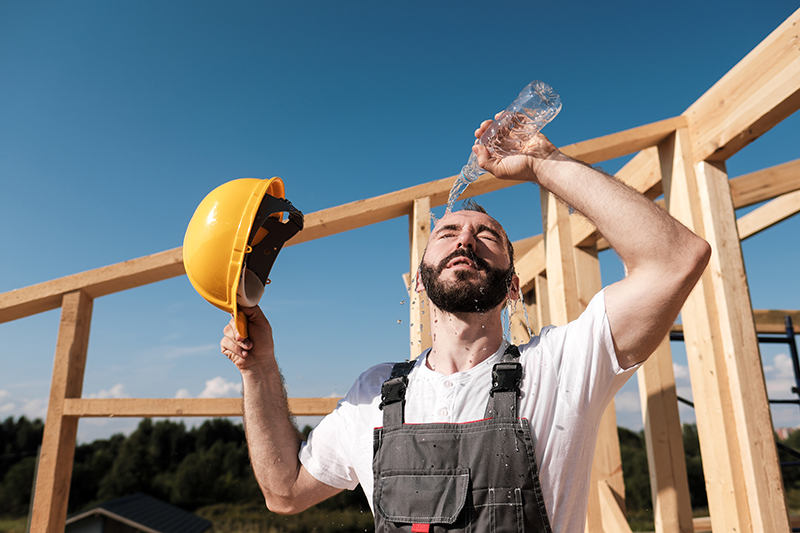
With summer in full swing, extreme heat is sweeping across the nation. High temperatures can be harmful, and at times potentially lethal, for those who work in the field, like installers.
There are ways that those who work outside can keep themselves safe during these warmer months.
1. Drink cold water
According to the Occupational Safety and Health Administration, those working outside in extreme heat should drink cold water even when they’re not thirsty. The recommended amount is one cup every 20 minutes. Drinking cool water also helps lower heart rate, hydrates internal organs, and improves focus.
Cool water also has more benefits than warm water, such as preventing body temperatures from increasing to dangerous levels. Also, warm water is typically less appealing to drink, making it less likely that employees will adequately hydrate during the day, putting them in danger of dehydration.
Magid, a safety equipment supplier, also suggests employers take the following precautions to keep their workers hydrated:
Give out cool beverages with additional nutritional and mineral benefits.
Certain varieties of electrolyte-replacing beverages absorb into bodies faster than water. Sports drinks and other electrolyte-replacing beverages help replace salts or minerals we lose after an hour of exposure to high temperatures; however, electrolyte-replacing drinks should never be the sole drink choice.
Provide hydrating options other than soda and energy drinks.
Many sodas and energy drinks contain high amounts of sugar and caffeine and as a result of its diuretic properties, caffeine can cause dehydration. While many workers enjoy the taste of energy drinks and sodas, cool water and electrolyte-replacing beverages are the better choices because they deliver all the benefits.
Drink stations should be placed as close to an employee’s jobsite as possible.
If drink stations are far from work areas, or contain warm water, employees will likely neglect their hydration needs. It’s vital to ensure cool liquids are accessible and available all day long.
2. Take breaks
Employees working outside should take breaks long enough to recover from heat given the temperature, humidity and conditions of the day. Employers should make sure to provide adequate breaks or alternating shifts throughout the day depending on the temperature, humidity and level of work.
According to the Centers for Disease Control, for example, employees performing heavy work in 95 degree weather, should work for 45 minutes and rest for 15 minutes on average. The rest to work ratio changes depending on the temperature and the level of work being done.
Workers should try to take their breaks in shaded and/or cool areas if possible.
3. Dress for the weather
Just like you should wear layers when working in the cold, you should be equally prepared while working in the heat and sun. Workers outside should wear a hat and light-colored, loose-fitting, and breathable clothing if possible.
4. Know the signs of heat illness
Even when steps are taken to prevent heat illness, it’s possible to fall susceptible to the extreme heat of the summer while working outdoors. That’s why it’s important for employers and employees to look out for each other on the jobsite and recognize the signs of someone with heat illness and know the appropriate next steps to take.
These are some symptoms, according to OSHA:
- Headache
- Nausea
- Weakness or dizziness
- Heavy sweating or hot, dry skin
- Elevated body temperature
- Thirst
- Decreased urine output
What should you do?
- Provide water
- Remove unnecessary clothing
- Move to a cooler area
- Cool with water, ice, or a fan
- Do not leave alone
- When in doubt, call 911
Signs of a medial emergency, where 911 should be called right away, include abnormal thinking or behavior, slurred speech, seizures, and loss of consciousness.
